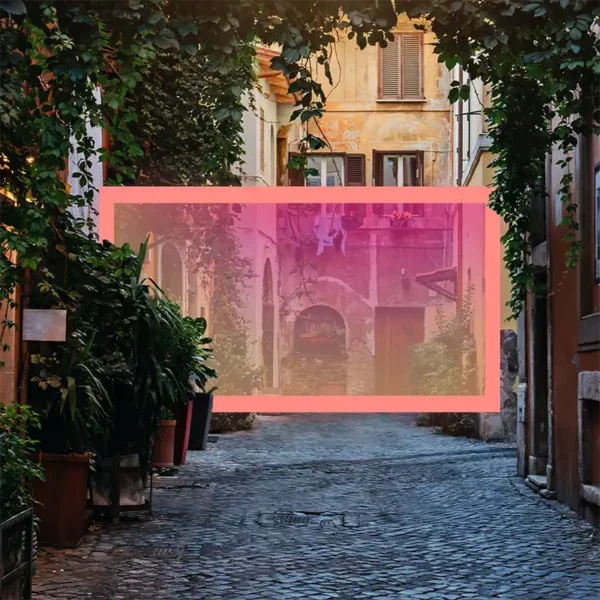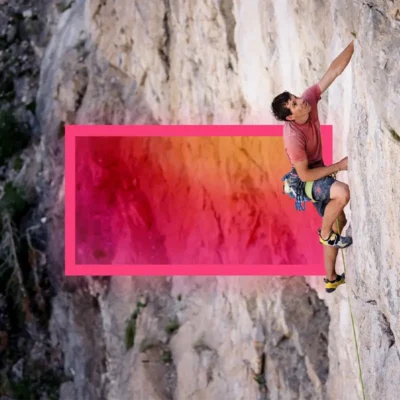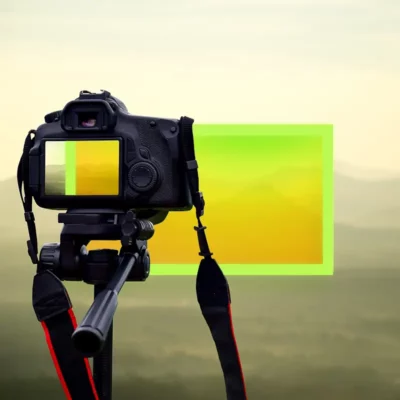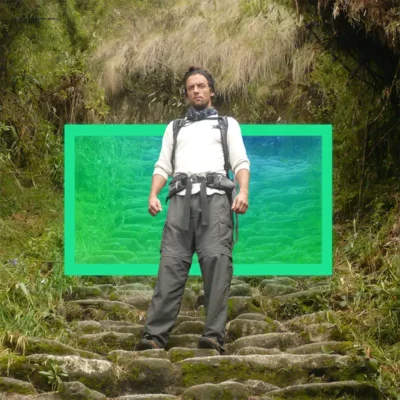How to find – and feed – your passion
Garlicky wafts of tomato sauce, plates overflowing with artichokes, warm laughter around tiny tables – this is the experience of a good meal. On a family vacation to Italy, celebrated restaurateur Danny Meyer fills with delight over a meal just like that, a delight which continues with every plate of cacio e pepe, every espresso topped with lemon zest, every warm trattoria. As he wanders through Italy, Danny finds that our sense of delight is connected to our sense of discovery. That human of all needs to discover and create is the recipe for a life well spent. Photo credit: Rob MacInnis.


Table of Contents:
Transcript:
How to find – and feed – your passion
DANNY MEYER: These early trips are filled with delight which continues over the course of my travels. The delight is always connected to discovery. And often, in my case, the discovery is connected to things I get to taste. It doesn’t have to be fancy food. It can be utterly simple and cheap. Every time I taste something delicious what fascinates me is who came up with the idea, what can I learn about it? What does it say about the people who made it?
ROHAN GUNATILLAKE: There’s so much to the culture of food that makes me feel alive – how it grows, how it brings people together, food’s ability to express our identity, community, creativity, our values. In today’s episode, world famous restaurateur Danny Meyer takes us back to where it all began for him, a family trip to Europe which opened his young eyes to what the experience of eating food together could be like.
In this series, we blend immersive, first-person stories with mindfulness prompts to help you restore yourself at any time of the day. I’m Rohan, and I’ll be your guide on this episode of Meditative Story. From time to time, we’ll pause the story ever so briefly for me to come in with guidance for a deeper connection to the story and what’s happening in your own experience as you listen.
The body relaxed. The body breathing. Your senses open. Your mind open. Meeting the world.
MEYER: Just before my twelfth birthday, my dad – who was in the travel business back in St. Louis – found himself negotiating to lease two different hotels in Rome. The good news for me and my family was that his negotiations were taking place not only during our two-week spring vacation but also during my twelfth birthday.
That was the first time I ever went to Rome and I remember on the actual day of my birthday having a twelve course pasta tasting dinner. It was a revelation to me. A complete revelation. Just the discovery of all these flavors and foods and people and places that I’d never experienced growing up.
The next day, my dad took us all to a famous old restaurant in Trastevere called Da Meo Patacca. Immediately, it hits me: the garlicky wafts of tomato sauce. The warm laughter around the tiny tables. All of my senses are suddenly awake because I’ve never seen a restaurant like this, and I’ve never had food like this.
There was the pasta of course… And the platters overflowing with artichokes! I had had artichokes back home in St. Louis – you know, the big, round ones, which my mom would sometimes boil to death, the leaves then dipped into melted butter. But I’ve never seen these long artichokes, fried and smashed into carciofi alla guida. And the roast baby lamb, abbacchio, with its odd cuts and tiny bones that are so succulent.
GUNATILLAKE: What a place and what a meal. Can you imagine sitting there at young Danny’s table? What would most capture your attention: the smells, the tastes, the spectacle?
MEYER: It’s an entirely different world from what I know growing up in St. Louis. Back home, I’m used to the flavors of the American Midwest. The mellow experience of growing up there as a kid in the 1960s, a somewhat repetitive culinary experience. Think: curb-side burgers, frozen custard, St. Louis-style pizza topped with Provel cheese, which is basically a lot of different cheeses combined, to the point where it doesn’t really taste like cheese at all.
But in Rome, everything tastes exactly as you’d hope it would. And the food in Rome was the great discovery of my life. I would go on to visit Europe every few years as a kid – and now as often as possible as an adult. These early trips are filled with delight which continues over the course of my travels. The delight is always connected to discovery. I’ve come to believe that this sense of discovery can be as nourishing as the food itself. But discovery means different things to different people. For some people, discovery is about seeing something unexpected; for others, it’s about doing something that they didn’t know they were capable of. In my case, the discovery is connected to things I get to taste.
My passion for food is the doorway that connects me most deeply to the world. Every time I taste something delicious, what fascinates me is: Who came up with the idea, what can I learn about it? What does it say about the people who made it?
I’ll never forget the first time I finally figured out that almost every Roman trattoria has the exact same pastas on the menu and every one of them is related. There’s the cacio e pepe, which is simply spaghetti with pecorino cheese, olive oil, and lots of black pepper. Then by simply adding guanciale, the bacon that comes from the cheek of the pig, it becomes spaghetti alla gricia. Or, by adding eggs, that same exact recipe becomes spaghetti alla carbonara. And if you omit the eggs and add tomato sauce instead, you get spaghetti alla amatriciana. Four different pastas, all related.
What impresses me isn’t always the complexity of the idea; sometimes it’s the simplicity. Something that impacted me from a young age about Italy was the emphasis on ingredients. Great Italian cooks really cherish, respect their ingredients. A little olive oil and salt doesn’t provide much disguise if the tomato itself isn’t perfectly sun-ripened, or if the basil isn’t fragrant. I remember a spaghetti alla carbonara, melanzane alla parmigiana, vongole veraci – the tiny clams that would open just as they were kissed by the garlic, olive oil, and spaghetti with which they were meant to marry. All so simple and unadorned.
One of the things I discovered about myself in Rome, that I prize wherever I find it, is an Italian word called sprezzatura. Sprezzatura is what happens when the food – or the painting or the athletic endeavour or the architecture – comes across as having been effortless, and yet the quality belies that. In other words, you can dig into a bowl of pasta that is so amazing and makes you so happy, and you know how much work must have gone into it – and yet, you look at that bowl of pasta and it appears to be effortless. That’s sprezzatura.
Today, that very ethos informs everything I do. How can this feel more timeless? How can the dining room be a little less designed, the dessert a little less composed? It’s a mindset of being understated, pared back. Letting the fundamentals shine. It’s so easy to fall into the trap of believing that more is better. Whenever I find myself thinking this way, I try to remind myself of the simple bowls of pasta that I first discovered in Rome. And the little things can make all the difference.
GUNATILLAKE: What little things can you notice right now around you? Even if they seem familiar, can you see, hear, or feel them with real freshness? There can be so much joy to being a tourist wherever you are.
MEYER: In Rome, I also discovered the way the restaurant itself can transform a meal: the earthy terracotta floors, the checkered tablecloths, the domed brick ceiling, and a warm glow of table lanterns. The tables are closer together than I’ve ever seen in St. Louis.
In the trattorias of Rome, no matter where you sit, you feel the buzzing energy of everyone around you. It’s that energy – the locals, the music of the motorcycles everywhere – all around. I find an irresistibly chaotic cacophony, and it almost always leads to a really good meal. There’s something about the different kinds of energy that heighten my senses. I feel connected to the people around me. Still today, there’s nowhere I feel more at home – or more alive – than at a trattoria.
I think I learned from these trattorias to pay attention to the tiniest details. I’ll never forget how odd it was when I first came to New York and I realized that, unlike St. Louis where I’d grown up, you don’t get a little lemon zest with your espresso. And why was it that in New York, unlike Rome, the cappuccino was known for how tall the foam was, almost as if someone was trying to create the Matterhorn mountain on top of the cup. And now today, something that you would also never see in Rome, New York places always try to design the foam.
So many people go in search of grand revelations. But I find discoveries everywhere I look. Even in the little things, like the foam in my espresso.
Italy is still my favorite place to go in search of these tiny discoveries. There’s just something about Rome that to this day, I feel like I must have lived there in a previous life. I go to the market and smell every single thing that can be smelled. Some people look at me like I’m crazy smelling everything, but those same people look to me like characters straight out of a Fellini film. I stop for three or four coffees even when I don’t need coffee – not because I do that in my real life but because how can I not? I notice the milk, the cups, the tiny chocolate or treat served on the side. And every time I pass one of those iconic drinking fountains, the ones you see all over Rome, I stop and drink from it. Like the city itself, like travel itself, the fountains of Rome rejuvenate me to continue my tour of discovery.
Rohan’s closing meditation
GUNATILLAKE: I have to be honest, I had to look up sprezzatura in the dictionary. It was a new word and idea to me, but I love it. In one place I saw it translated as ‘studied carelessness’, when something has the appearance of having just been thrown together but actually has been the result of meticulous skilled work. So Italian.
All of which made me wonder what would be the most sprezzatura of meditation techniques? And the one that came to mind right away is one called noting. So that’s what we’re going to try a little bit of now. So let’s get ready.
If you’re sitting, sitting comfortably. If you’re standing, standing comfortably. However your body is, seeing if you can let it express the qualities of both alertness and relaxation. Uprightness in the spine supporting alertness. Softness in the belly supporting relaxation and openness. Enjoying resting your awareness in the body. Letting your awareness fill the whole of your body. From the touch of your feet on the ground to the top of your head.
Being present. Present in the body. Simple. Whole. And here.
And now that we have established ourselves in awareness of the body we’re going to play a little game. And the rules are quite simple. At any one time, there will be a particular aspect of your inner experience which is most prominent, which most stands out, where your attention is drawn to.
Be interested in what that is, and the game is to simply say its name out loud. And if you’re not sure what’s most prominent, then simply say “not sure”, and by definition you’re naming what is happening.
That might not be clear, so let me do an example: Tension. Touch. Tingling. Planning. Thinking. Not sure. Calm.
That’s all it is.
What we’re doing is being aware of what’s most prominent inside ourselves and saying its name out loud. Nothing more to it. It’s actually quite straightforward. So do give that a go yourself. And if it doesn’t feel right to say the words out loud, just say them internally to yourself. I’ll start again and when I stop, it’s over to you: Touch. Tingling. Not sure. Grateful. Calm. Ok now you, just naming what is happening while it’s happening.
That might have felt odd or it might have felt great. Either way, this is one of my favorite mindfulness techniques around, because if mindfulness is knowing what’s happening inside yourself while it’s happening, then doing this noting technique is as pure a form of mindfulness as we can get.
Ok. Letting your awareness fill the whole body again. Noticing the energy that’s here, the momentum from having done the exercise. Building back our reserves of stability and balance. And let’s give it another go. Again I’ll start off and then it’s over to you.
Just naming what’s happening in your inner experience, whatever’s most prominent. If that’s a physical sensation, then naming that physical sensation. If it’s a mental process, naming that mental process.
There are only a few simple rules to keep in mind. Keep the rhythm going nicely so that your mindfulness is good and constant. If you’re thinking about dinner, the thing you should note is thinking rather than dinner since what is happening is the thinking, not the dinner. And if you’re not sure what’s happening then just note not sure. And you’ll be right.
Oh and have fun. Again, I’ll start you off: Tingling. Not sure. Relaxation. Itching. Amusement. Thinking. Now over to you.
Nicely done. I hope that was fun.
And I also hope that you can see why I think it’s a technique of real sprezzatura. Because while deceptively simple on the outside, it belies the fact that what you need to do to make it happen is a really strong foundation in mindfulness and an alive and alert mind.
You might have really connected with this technique or it might not have worked for you this first time around, that’s totally normal. If you do like it, remember it’s entirely portable. Every moment is a chance to note what’s happening inside. Every moment is another stop on your tour of discovery.





